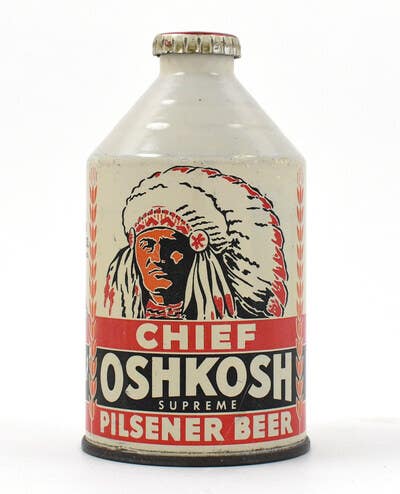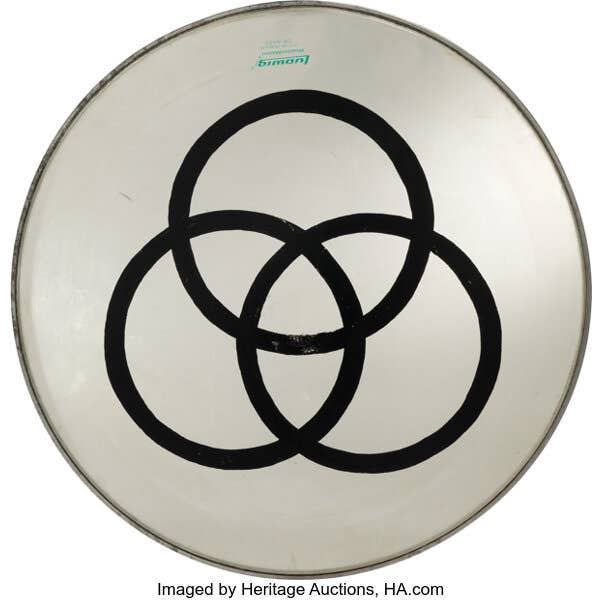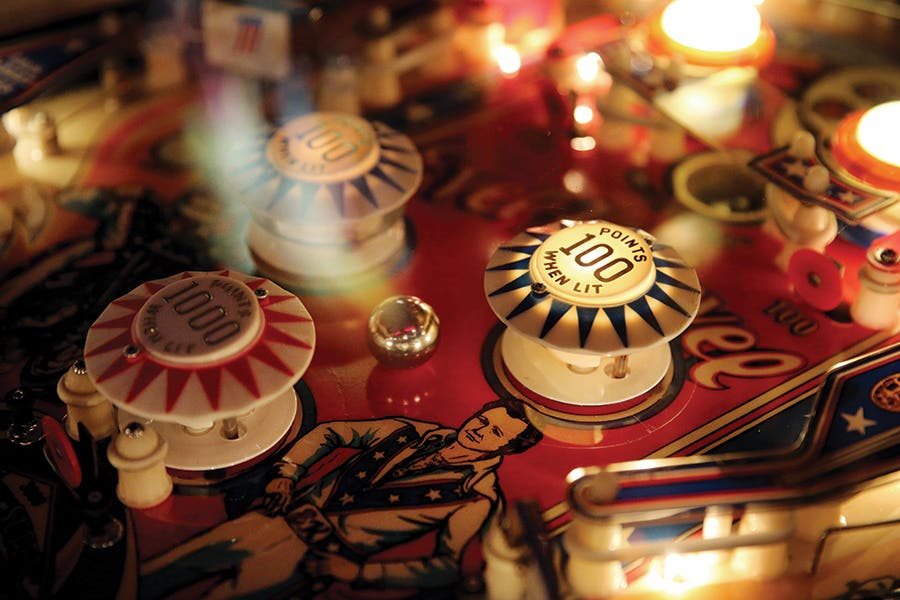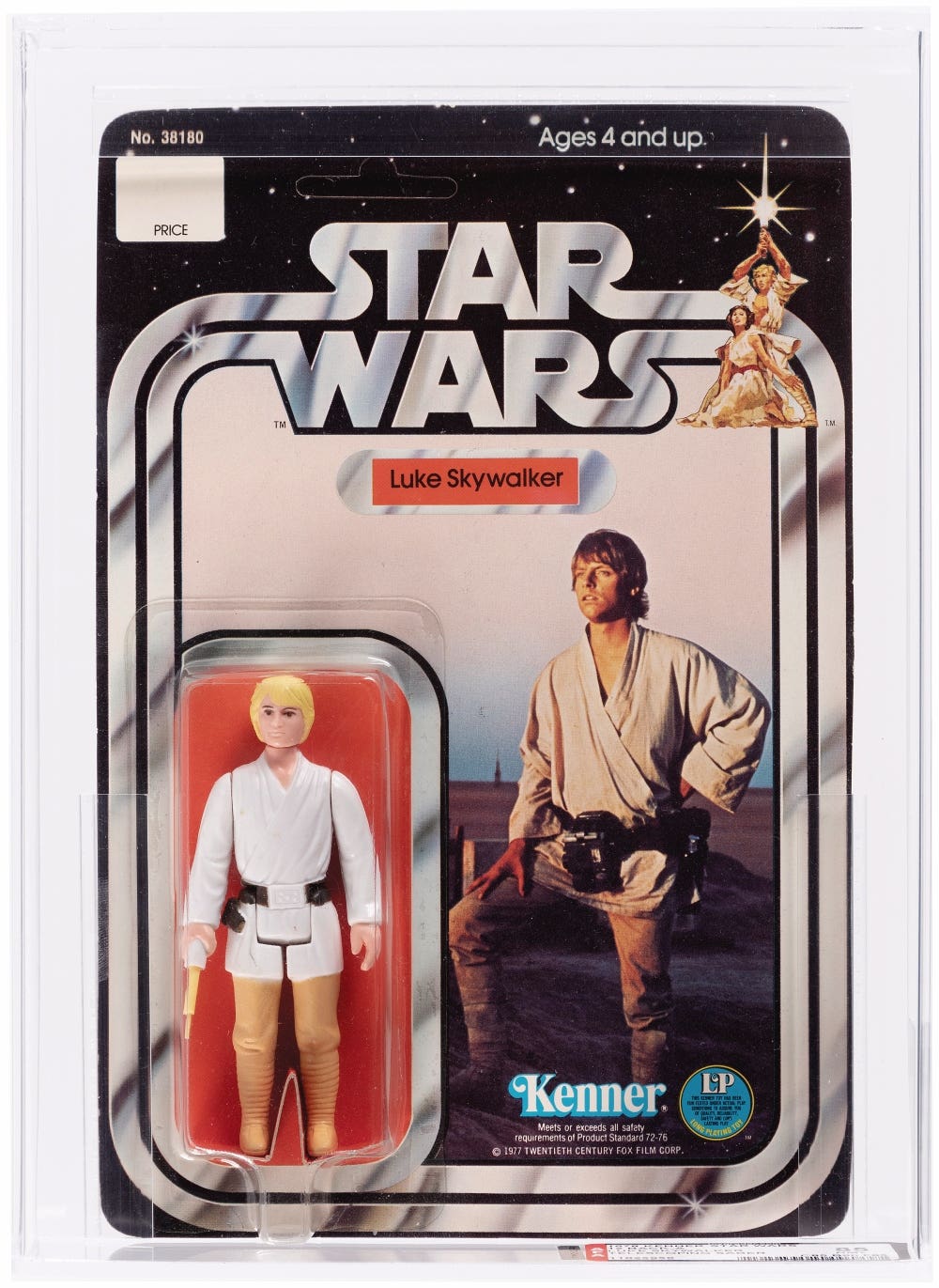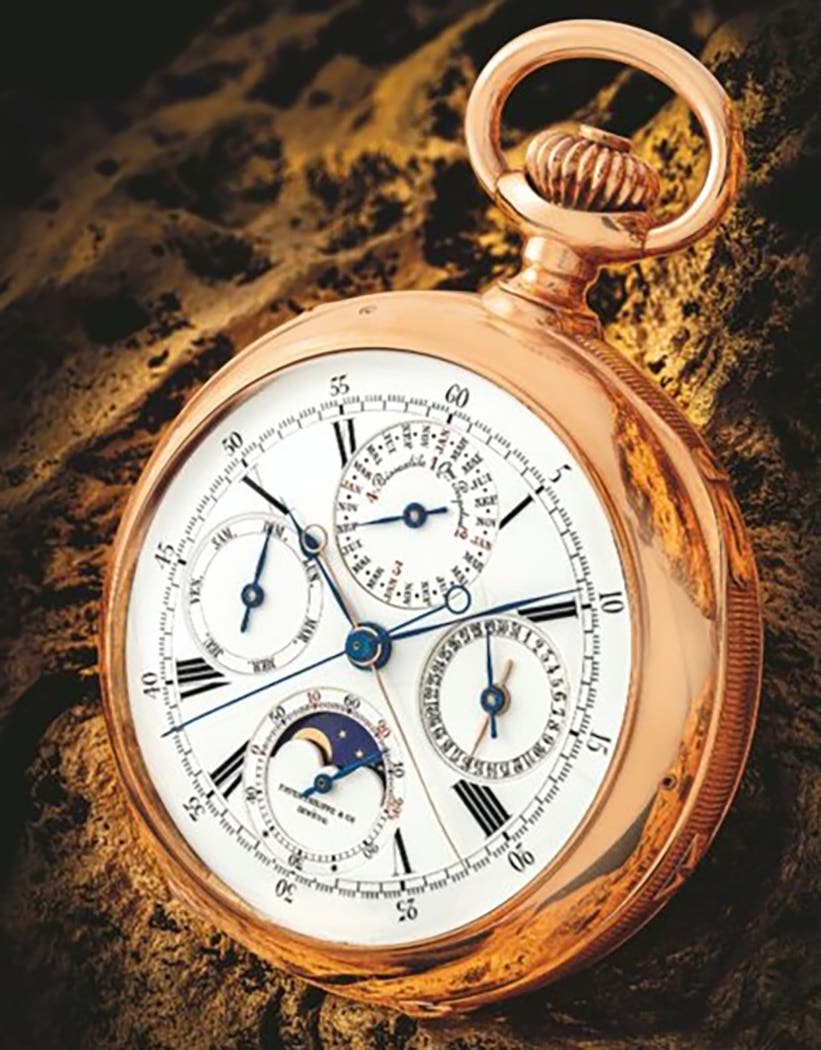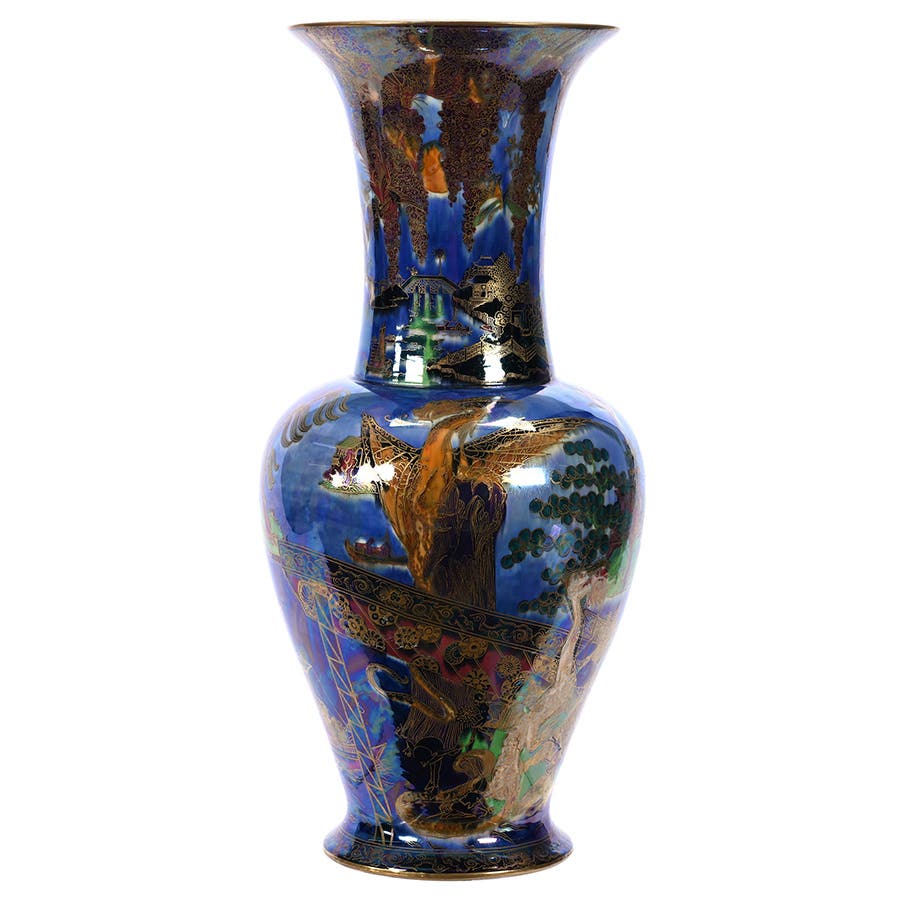Victorians Flaunted Condiments in Beautiful, Functional Pickle Castors
Pickle castors were used to serve pickles and other pickled vegetables and fruits, and it was considered the height of elegant dining to have one on the table.
The dining tables of Victorians were a treasure trove of utensils and beautiful serving pieces in ornate patterns and styles. One of these common table accessories that is an example of the Victorians’ mastery of combining practical function with a beautiful form is the pickle castor.
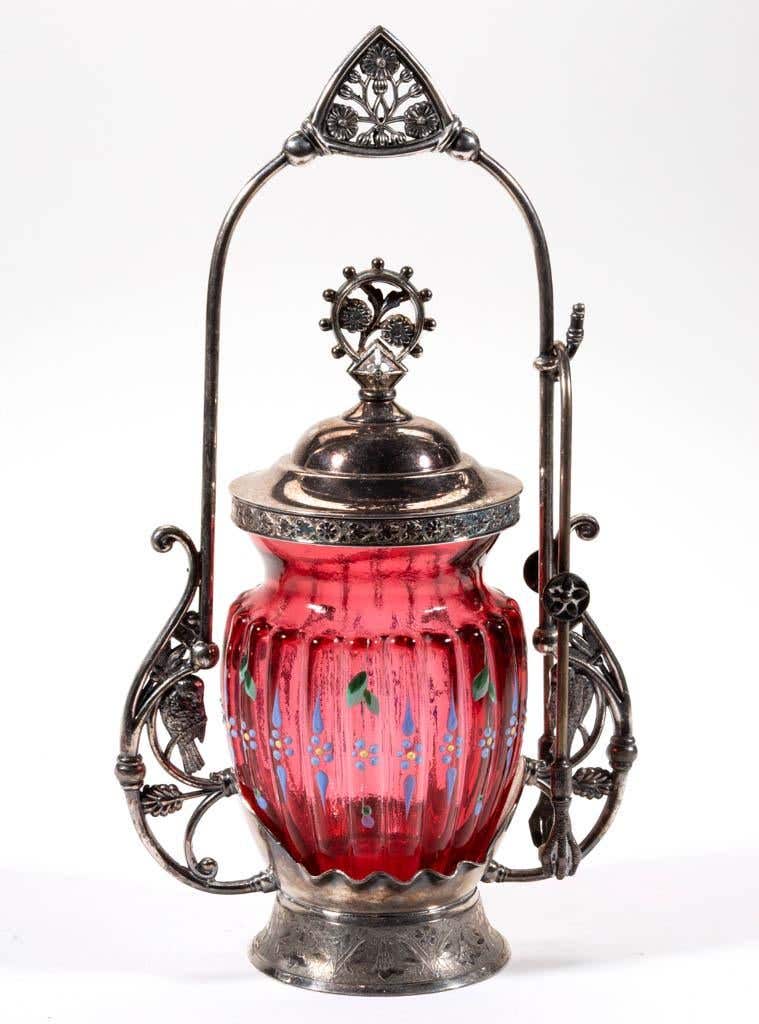
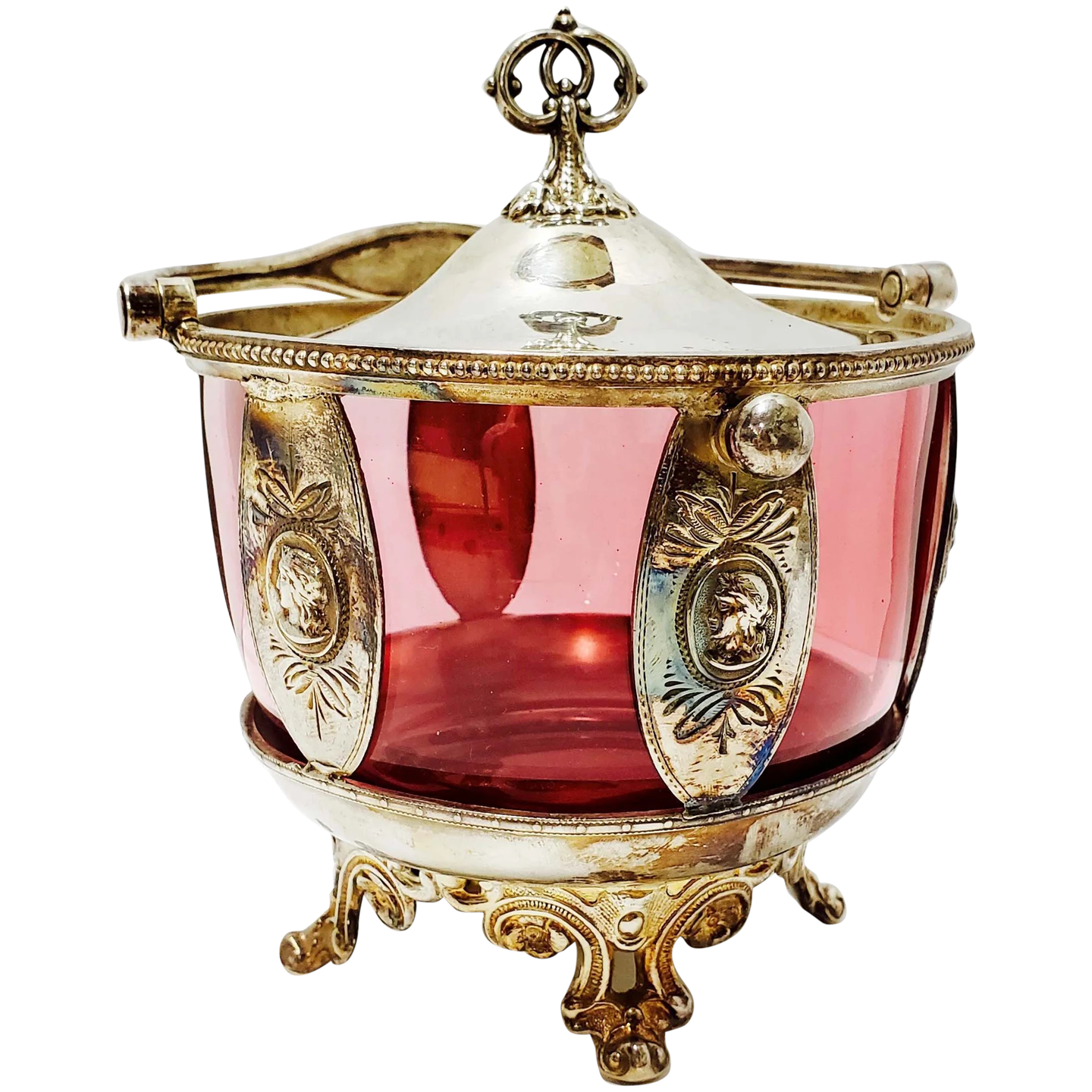
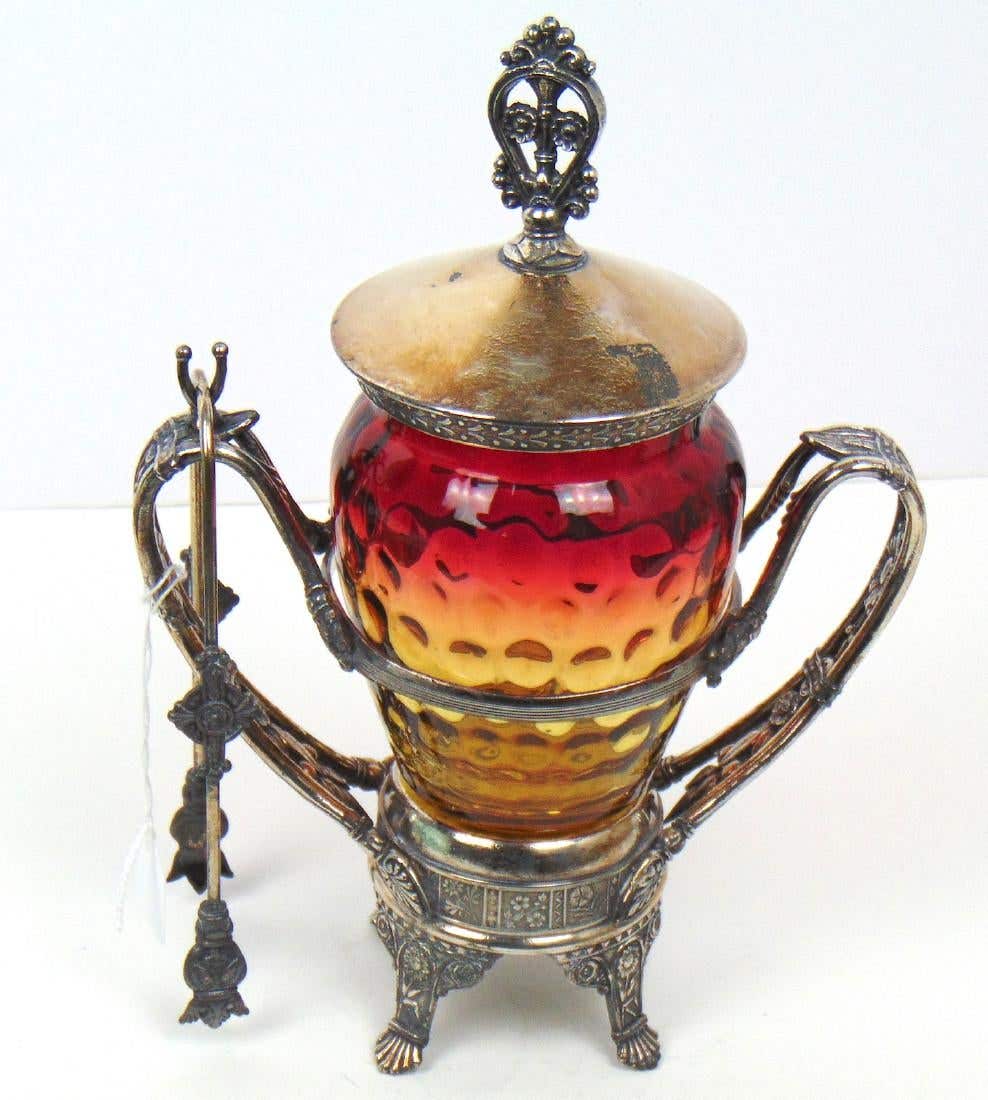
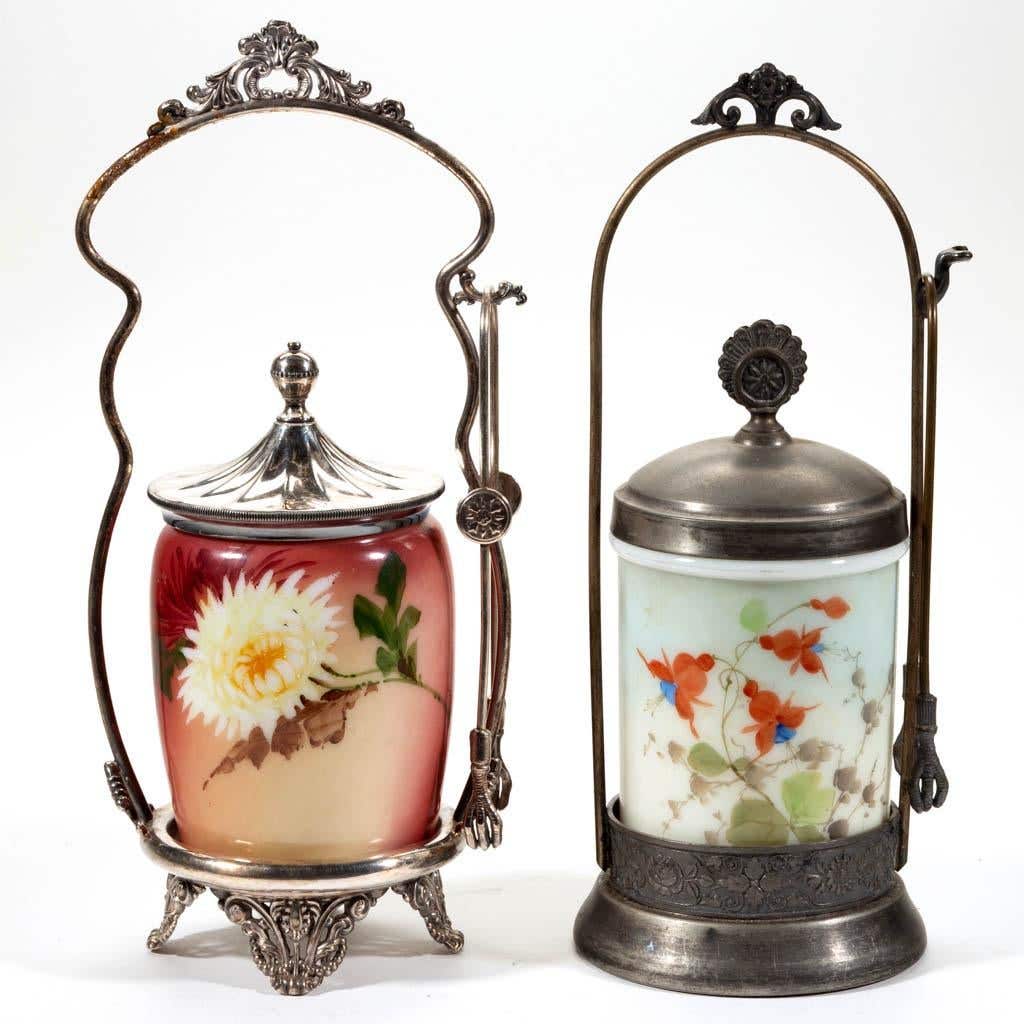
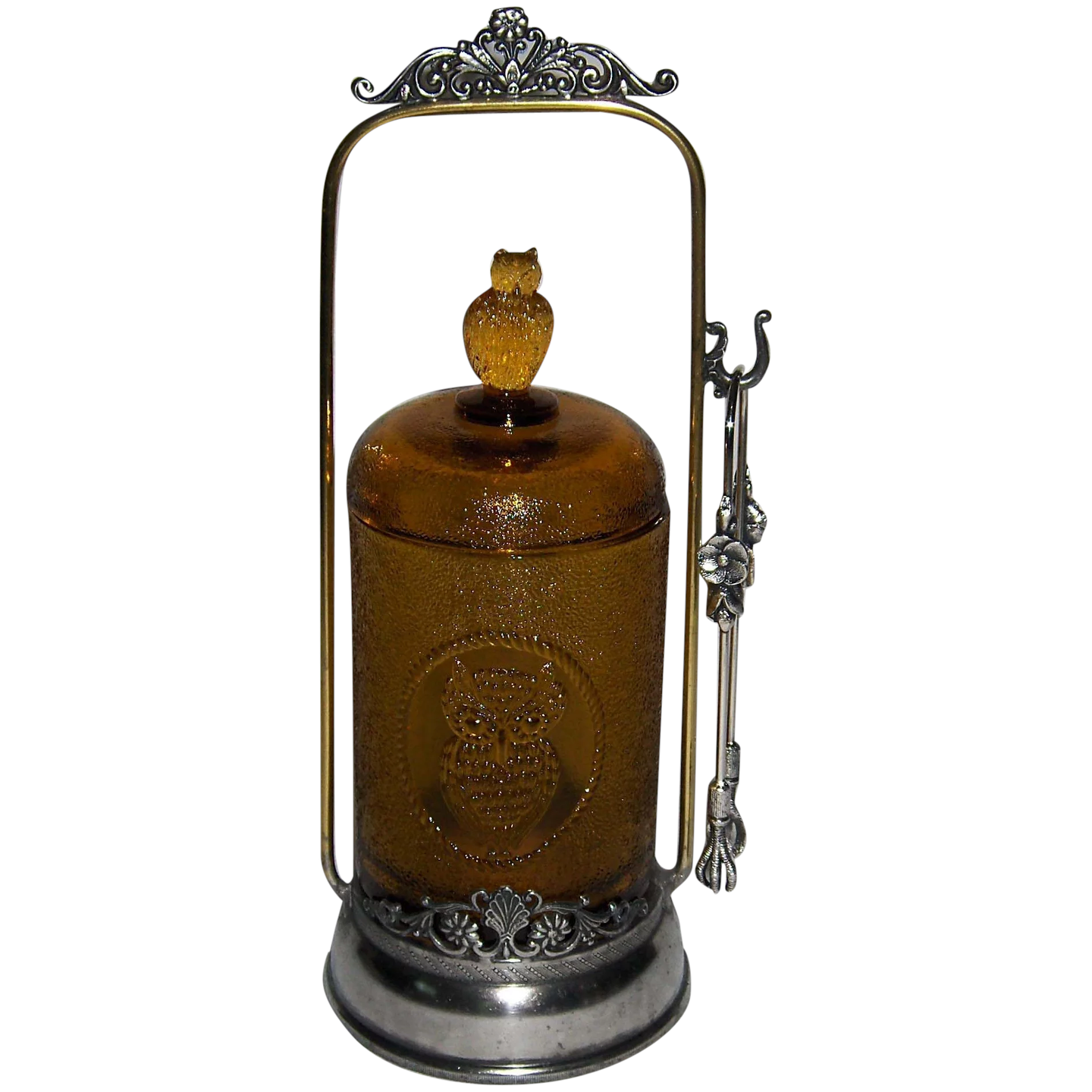
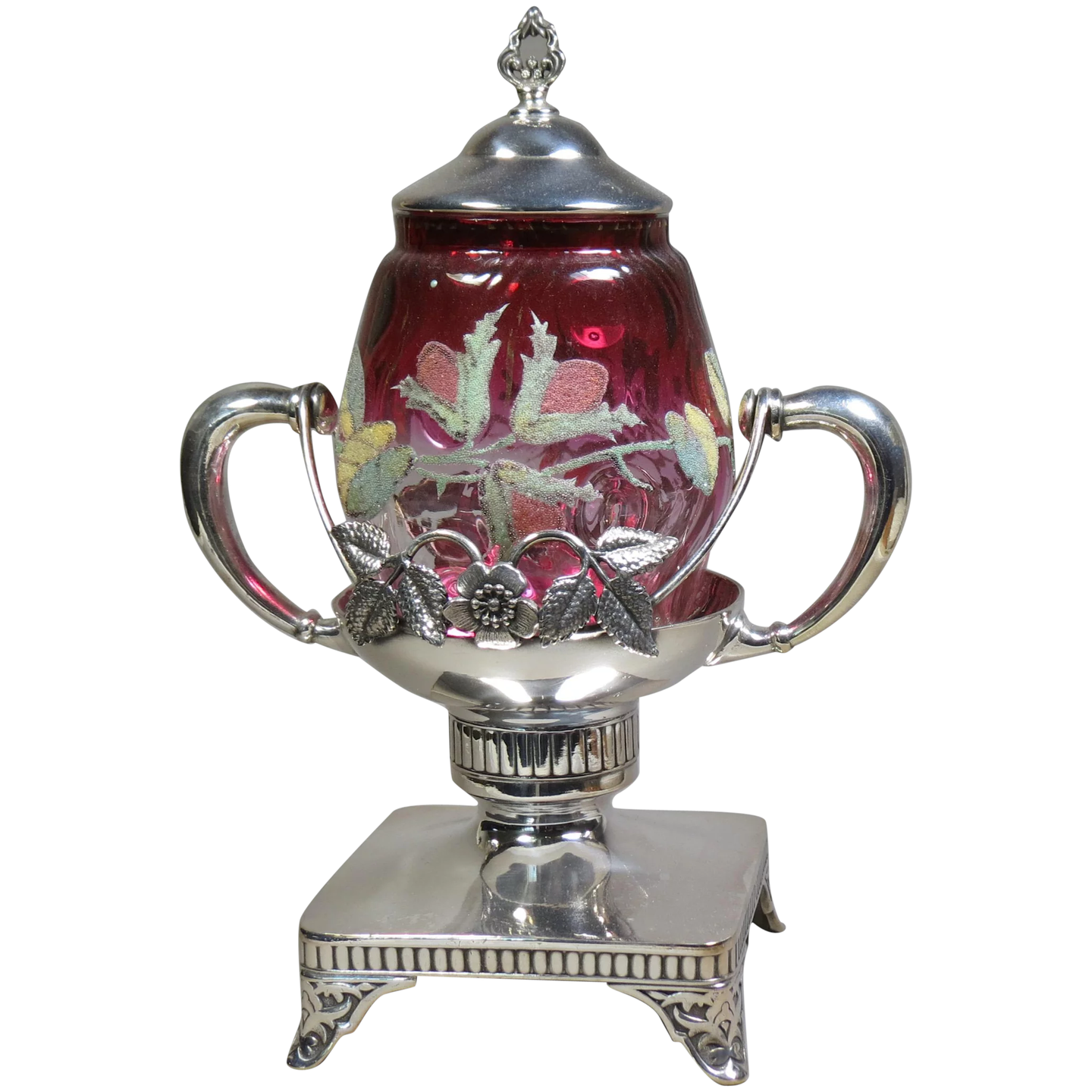
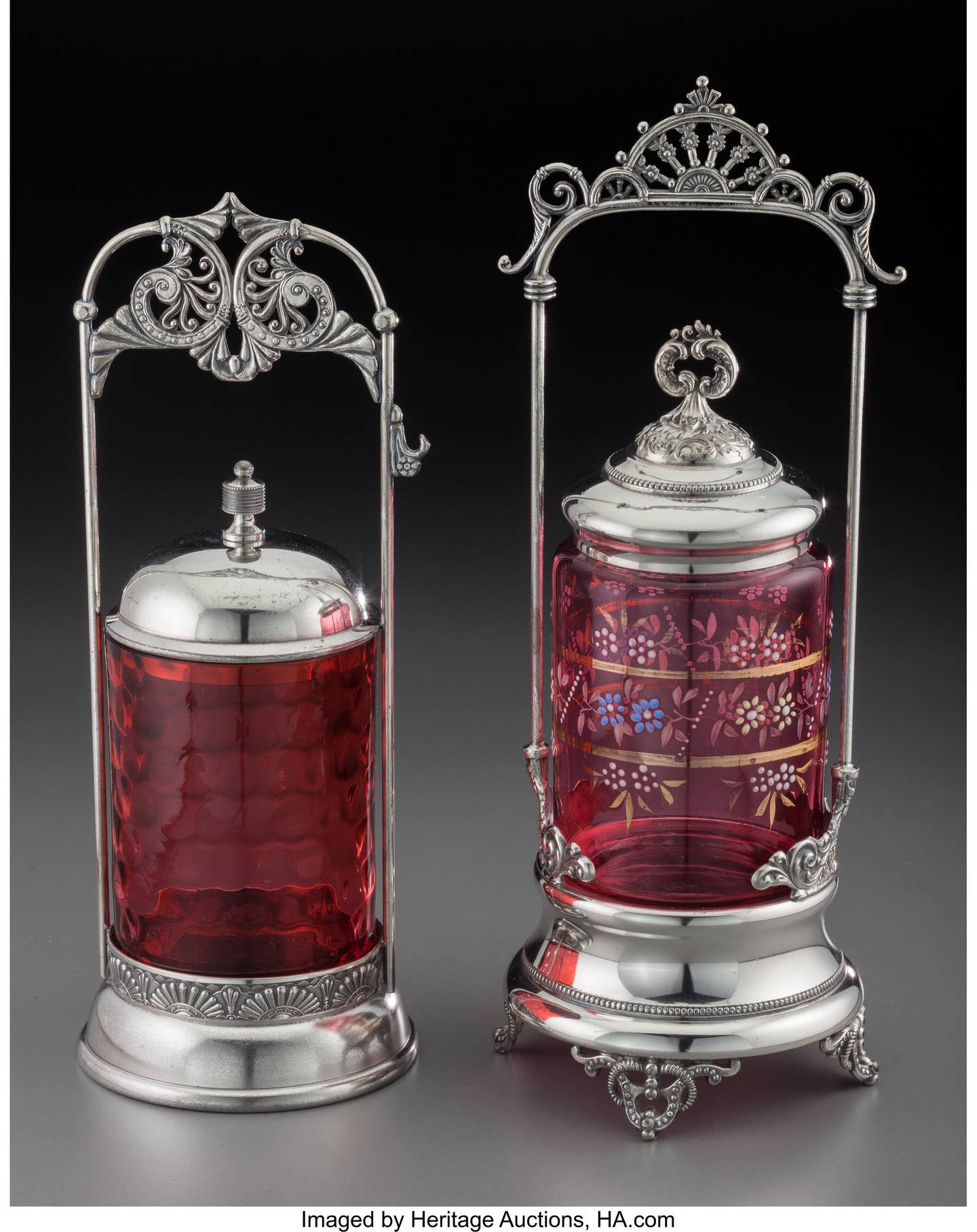
Pickle castors are glass jars (in pattern glass and colored art glass) fitted in an elaborately designed silver-plated frame and matching silver-plated lid. Some castors also have matching silver-plated tongs or pickle fork. They were used to serve pickles and other pickled vegetables and fruits. It was considered the height of elegant dining to have a pickle castor on the table — or two, if a family was especially wealthy. Not only did pickle castors convey status, they also showed off the power to have servants, as household kitchen staff were responsible for preparing and preserving the jar’s contents then using it to display the fruits of their labor.
The ornamentation of the stands depict a wide variety of decorations including miniature gargoyles, lattice work, beading, flowers, birds, cherubs, and animals. Glass inserts are pressed, cut, etched, frosted, hobnail, clear, colored, satin, quilted, enameled and often embellished with gold. Pickle castors are found in many sizes and shapes, and the ones with colored glass or rare pressed glass patterns are scarce and consequently more valuable.
By 1890, pickle castors were a popular item, but about a decade later, they fell out of fashion and remained in quiet obsolescence until collectors took a renewed interest in Victorian art glass in the mid-1980s through the 1990s. During that period, many castors fetched $500 to $1,000 and as much as $1,500 or more for rare, double-jar examples.
A check online shows that most are selling today at auction and websites including Ruby Lane, eBay, Etsy, Live Auctioneers and 1stdibs, for around $50 to $500, although many examples still sell for $1,000 and more, based on condition, rarity, decoration, glass type and makers. Noted makers include Meriden B. Company, James Tufts, Reed & Barton, Pairpoint and Simpson, Hall, Miller & Co.
Frames and jars were made to go together as a fitted pair, but frames get bent and jars can break or get lost over time. Consequently, there are “married” pickle castors selling on the market. Married castors are mixed sets of frames and inserts — new inserts with authentically old frames or authentic antique inserts in new frames. Most sellers will usually note this, but some clues of a married castor is when the shape of the jar doesn’t go with the shape of the frame and doesn’t fit properly in it, either because it’s too small, big, tall or round, and the lid is also not an exact fit to the rim of the jar.
As with many antiques and collectibles, there are also flat-out fakes and reproduction pickle castors on the market. Tell-tale signs include details that are poorly executed — original silver castor frames are works of art with clear, crisp details, while new reproductions can look sloppy in comparison; overly shiny silver, which indicates replating or newly plated silver; and missing silver hallmarks can also be suspect, as 19th century silver makers hallmarked their wares.
It pays to do your homework and buy from reputable sources.
This long-forgotten serving piece is still a highly collectible art form today and a wonderful way to remember the charm of those earlier times. Even if you don’t like pickles, these pieces can be filled with candy, some small collectibles, or just serve as a pretty conversation piece.



